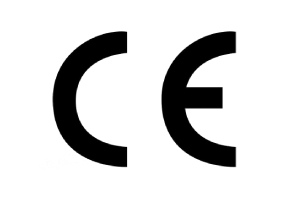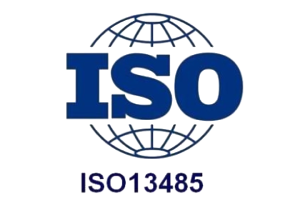Produktkatalog
Vores GBR-produktlinje (Guided Bone Regeneration) tilbyder et omfattende sæt avancerede værktøjer, der er designet til at lette regenerering og reparation af knoglevæv. Denne serie omfatter vigtige værktøjer som f.eks. dentale titaniumnet, knogleskruer, teltskruer og maxillary sinus lift kits, der imødekommer forskellige behov for knogleregenerering.
Dentale titaniumnet giver støtte på knogletransplantationsstedet, mens knogleskruer bruges til at fastgøre transplantationsmaterialet, hvilket hjælper med at danne en stabil knoglestruktur og fremmer integration og heling. Teltskruer spiller en afgørende rolle i at støtte og beskytte knoglen under regenerering og hjælper med at opretholde den ideelle position af blødt væv og knoglevæv og forhindre kollaps. Alle disse GBR-redskaber er omhyggeligt designet og grundigt testet for at sikre de bedste resultater og pålidelighed i knogleregenerering og reparationsprocesser.
Vores GBR-sæt (Guided Bone Regeneration) tilbyder en omfattende løsning til knogleregenerationsprocedurer. Systemet er designet med fleksibilitet for øje og giver mulighed for skræddersyede konfigurationer - tandlæger kan vælge præcis de skruer, net og instrumenter, der er brug for til hvert enkelt tilfælde. Det komplette GBR-sæt indeholder vigtige værktøjer til fastgørelse af barrieremembraner, fiksering af knogletransplantater og opsamling af autogen knogle. Det indeholder kernekomponenter som knogleskruer, hæftesystemer, selvfikseringsanordninger og teltsystemer, hvilket gør det til et alsidigt og effektivt valg til klinisk knogleregeneration.
Bone tacks er små, skarpe titaniumstifter, der i vid udstrækning bruges i dentale GBR-procedurer (Guided Bone Regeneration) til at fiksere membraner sikkert på plads. De hjælper med at holde membranen fast på den omgivende knogle under helingen. Vi tilbyder både automatiske og manuelle bone tack-systemer, der passer til forskellige kliniske behov. Det automatiske sæt indeholder en knoglehæftepistol og titaniumstifter til hurtig og effektiv placering, mens den manuelle Bone Tack Holder giver mulighed for en mere kontrolleret påsætning. Tilsammen giver disse værktøjer pålidelig membranstabilitet og understøtter en vellykket knogleregeneration.
Knoglestifter af titaniumogså kendt som membranstifter, er designet til sikker fiksering af barrieremembraner i dentale GBR-procedurer. De har et bredt, fortykket hoved for stærkt greb og stabilitet, en omvendt kegleform for at forhindre, at de løsner sig, og fås i flere størrelser med farvekodet anodisering og giver præcis, pålidelig membranpositionering for effektiv knogleregenerering.

Den Automatisk kit til knogler forenkler membranfiksering i GBR-procedurer ved at eliminere manuel kraft - bare tryk på knappen for hurtig, stabil placering. Dette reducerer ikke kun proceduretiden, men minimerer også patientens ubehag. Sættet indeholder en knoglehæftepistol og en pænt organiseret æske med hæfteklammer, der sikrer sikker og hygiejnisk opbevaring. Sættet fås i to diametre (φ2,0 mm og φ2,5 mm) og tre længder (3 mm, 4 mm og 5 mm), og det giver fleksible muligheder for at opfylde forskellige kliniske behov.

Den Lingual Bone Tack Holder er et præcisionsværktøj, der giver mulighed for nem og stabil placering af knoglestifter uden behov for at hamre. Du skal blot trykke på den koniske spids for at sætte tack'en fast, hvilket gør lingual- eller palatalprocedurer meget lettere. Det er især nyttigt ved GBR-kirurgi, hvor membranfiksering på den linguale side ofte er vanskelig på grund af begrænset adgang - dette værktøj muliggør hurtig og problemfri stiftplacering.

Vores knogleskrueserie omfatter Ø1,3 spidse skruer, Ø1,3 stumpe skruer, Ø1,0 mikroskruer samt teltskruer og et dedikeret teltskruesæt - designet til at opfylde de forskellige behov ved knogletransplantation og ortopædiske procedurer. Disse skruer er fremstillet af FDA-certificeret titaniumlegering af høj kvalitet og sikrer fremragende biokompatibilitet og langvarig stabilitet. Deres selvborende design eliminerer behovet for forboring, hvilket forenkler procedurerne og forbedrer den kirurgiske effektivitet. De er fuldt kompatible med vores knogleskruesæt og tilbyder en problemfri og pålidelig løsning til forskellige kliniske scenarier.
Vores knoglefikseringsskruer i titanium er omhyggeligt designet med et ultratyndt hoved på 0,9 mm for at reducere vævsirritation og gøre det mere behageligt for patienterne efter operationen. Torx-hovedet giver et sikkert greb for bedre kontrol og præcision under placeringen. Med en række forskellige længder og farvekodede anodiserede overflader er de nemme at identificere og tilpasse til hvert enkelt tilfælde. De fås både med selvborende og stump spids og er bygget til at håndtere en række forskellige kirurgiske behov med lethed og pålidelighed.


Teltskruer til knogletransplantation er designet med et særligt låsende konisk krydsdrevssystem, der gør det nemt at placere dem præcis, hvor det er nødvendigt. De giver stærk støtte under operationen og hjælper med at forhindre problemer som perforering af membranen eller overrivning, hvilket gør proceduren mere sikker og smidig for både læger og patienter.
Vores titaniumnet er fremstillet af medicinsk titanium af høj kvalitet, der giver stærk støtte og fremragende biokompatibilitet til GBR-procedurer (guidet knogleregeneration). Det fås i en række forskellige former og størrelser - herunder H-formet, T-formet, firkantet og meget mere - for at imødekomme forskellige kliniske behov. Nettet er let at trimme og konturere, så klinikerne kan tilpasse det ud fra den specifikke knogledefekt og patientens anatomi. Den stive struktur hjælper med at bevare plads til knogleregenerering, mens fleksibiliteten sikrer nem tilpasning og håndtering under operationen. Dette net er holdbart, korrosionsbestandigt og let at arbejde med og er et pålideligt værktøj til at opnå forudsigelige, stabile resultater i knogletransplantationssager.
Vores specialinstrumenter er designet til at gøre tandbehandlinger nemmere og mere effektive. Titaniumbørsten hjælper med effektivt at håndtere periimplantitis, mens knogleskraberen giver mulighed for hurtig og bekvem høst af autogen knogle. Vi tilbyder også en tensionkam, et sinusløftsæt og et crestalt (indvendigt) sinusløftsæt - alt sammen skræddersyet til at opfylde forskellige kirurgiske behov med præcision og lethed.

Elastisk børste af titanium til peri-implantitis er et specialiseret rengøringsværktøj designet til tandimplantater, fremstillet af titanium af høj kvalitet for at sikre, at implantatet ikke beskadiges. De fine titaniumtråde er bløde, men holdbare, og de er parret med et elastisk børstehoved af nikkel-titanium, der giver fremragende fleksibilitet og elasticitet, så implantatoverfladerne kan rengøres skånsomt og effektivt. De ultrafine nikkel-titanbørster kan nå vanskelige områder og fjerner grundigt snavs og bakterier, samtidig med at implantatoverfladens integritet bevares, hvilket gør den til det ideelle valg til at holde implantater sunde og forebygge periimplantitis.
Dental Bone Scraper er et højtydende instrument, der er designet specielt til oral kirurgi. Den er fremstillet af rustfrit stål af medicinsk kvalitet og har en fremragende korrosions- og slidstyrke, som holder selv efter flere steriliseringer. Det ergonomiske håndtag sikrer komfort ved langvarig brug, reducerer træthed og forbedrer den kirurgiske præcision. Det alsidige værktøj kan udføre opgaver som autolog knogleopsamling og knogleforstørrelse uden behov for yderligere instrumenter, hvilket øger den kirurgiske effektivitet og succesraten. Det er klinisk testet og professionelt certificeret, og det er udstyret med skarpe, holdbare engangsklinger, der er nemme at rengøre og hurtigt kan udskiftes. Den giver stor værdi og tilbyder også omfattende eftersalgssupport.

Vi inviterer distributører, hospitaler og tandklinikker til at gå sammen med os om at skabe flere smil, drevet af en fælles passion for tandimplantater.
I disse GBR-kirurgiske tilfælde (Guided Bone Regeneration) blev DentalMaster titaniumnet af høj kvalitet brugt som barrieremembran for at lette knogleregenerationen i de berørte områder. Nettet blev sikkert fastgjort med membranstifter for at sikre stabilitet og bevare regenereringsrummet. Knogleskruer blev brugt til at forankre transplantatmaterialet på plads, fremme celleproliferation og støtte knogleheling. Avancerede tandlægeinstrumenter, herunder knogletransplantationsknive, membranklemmer og bor, blev brugt til at udføre procedurerne med præcision og sikre både sikkerhed og nøjagtighed. Disse pålidelige tandlægeværktøjer og -teknikker genoprettede med succes patienternes knoglestrukturer og forberedte områderne til fremtidig placering af tandimplantater. Hvert tilfælde fremhæver vigtigheden af korrekt kirurgisk planlægning og brug af førsteklasses tandlægeinstrumenter for at opnå optimale resultater.



Vores tandplejeprodukter lever op til strenge kvalitetsstandarder, og vi er forpligtet til løbende at lære og forbedre os for at sikre, at både du og dine tandplejepatienter kan modtage den højeste kvalitet og de mest professionelle produkter og tjenester, der findes på markedet.

CE-certificering (klik for at se)

ISO13485-certificering (klik for at se)

DENTALMASTER SLA Dental Implant System_Produktgodkendelse_Indonesien Exp. 12102025 (klik for at se)

Produktlicens 67-2-2-0004127_DentalMaster Dental Implant System (klik for at se)
Med 16 års erfaring har DentalMaster specialiseret sig i at designe og fremstille dentale instrumenter af høj kvalitet. Udstyret med avanceret teknologi som CNC-bearbejdning og præcisionsinspektionsværktøjer leverer vi pålidelige løsninger, der er skræddersyet til dine behov.
Vores tilpassede tjenester, strenge kvalitetsstyring og samarbejde med anerkendte tandlægeeksperter sikrer innovative, pålidelige værktøjer til både rutinemæssige og komplekse procedurer. Vælg DentalMaster for at få kvalitet, du kan stole på.

GBR inden for tandpleje refererer til Guided Bone Regeneration-teknik, som er en kirurgisk metode, der anvender biomaterialer og teknologi til at placere en barrieremembran i knogledefektområdet, der isolerer og beskytter det nydannede knoglevæv, samtidig med at den fremmer spredning af osteoblaster og regenerering af knoglevæv. Denne teknik bruges hovedsageligt til behandling af paradentose, reparation af alveolære knogledefekter og behandling af knogledefekter omkring tandimplantater. Den hjælper med at genoprette tændernes støttestruktur og forbedrer mundfunktionen.
Behandlingsforløbet for guidet knogleregeneration (GBR) er en kompleks proces, der påvirkes af flere faktorer, herunder knogledefektens sværhedsgrad, egenskaberne ved de anvendte materialer og patientens individuelle helingshastighed. Fra indgrebets start til det punkt, hvor den nydannede knogle er stærk nok til at bære et implantat, kan denne proces generelt tage ca. 3 til 6 måneder. I denne restitutionsfase skal patienterne nøje følge lægens anvisninger og møde op til de planlagte opfølgningsaftaler for at sikre, at behandlingen skrider frem som forventet og giver det ønskede resultat.

DentalMaster er en virksomhed, der har specialiseret sig i implantat-tandpleje. Varemærker som Nobel Biocare, Short Bicon, Straumann, Zimmer, Megagen, Dentium og Hiossen er registrerede varemærker tilhørende deres respektive virksomheder. DentalMaster har ingen kommerciel tilknytning til disse virksomheder. Disse mærker nævnes udelukkende med det formål at identificere kompatible implantater, instrumenter, abutments og komponenter, der tilbydes af DentalMaster.
Hurtige links
Produkter
Kontakt os
Copyright © 2024 DentalMaster Dental Instrument Suppliers CE/ISO13485. Alle rettigheder forbeholdes.